Bokashi Composting Urban: Brilliant & Effortless Food Waste Solution
Tired of that smelly kitchen bin overflowing with food scraps? Wish you could turn your waste into something useful without a big backyard or a complicated process? You’re not alone! Many urban dwellers face the same challenge. But what if I told you there’s a super simple, clean, and fast way to compost right in your home, even in a tiny apartment? Bokashi composting is that neat trick, and I’m here to show you exactly how it works. Let’s dive in and make food waste a thing of the past, the easy way!
What is Bokashi Composting?
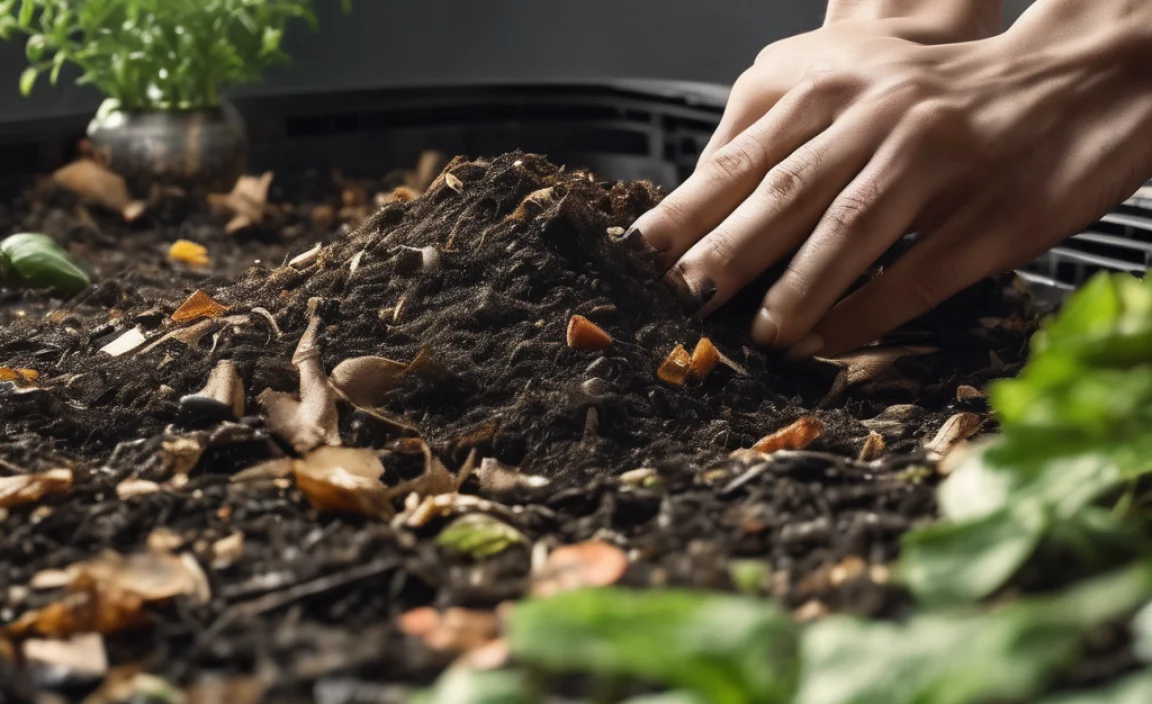
So, what’s this “Bokashi” thing all about? Put simply, Bokashi is a fermentation process for food waste. Unlike traditional composting that relies on oxygen and microbes to break down materials, Bokashi uses anaerobic fermentation. This means it happens without air, thanks to special “Bokashi bran” that’s sprinkled on your food scraps. This bran is full of beneficial microbes, primarily Effective Microorganisms (EM), that pickle your waste rather than rot it. This process is fast, odorless, and can handle almost all your food scraps – even meat and dairy, which are usually a no-go for regular compost bins!
Think of it like making sauerkraut, but for your food waste. The microbes create an acidic environment that preserves the food scraps while breaking them down. This pickled waste is then easily processed into nutrient-rich compost.
Why Bokashi is Perfect for Urban Living
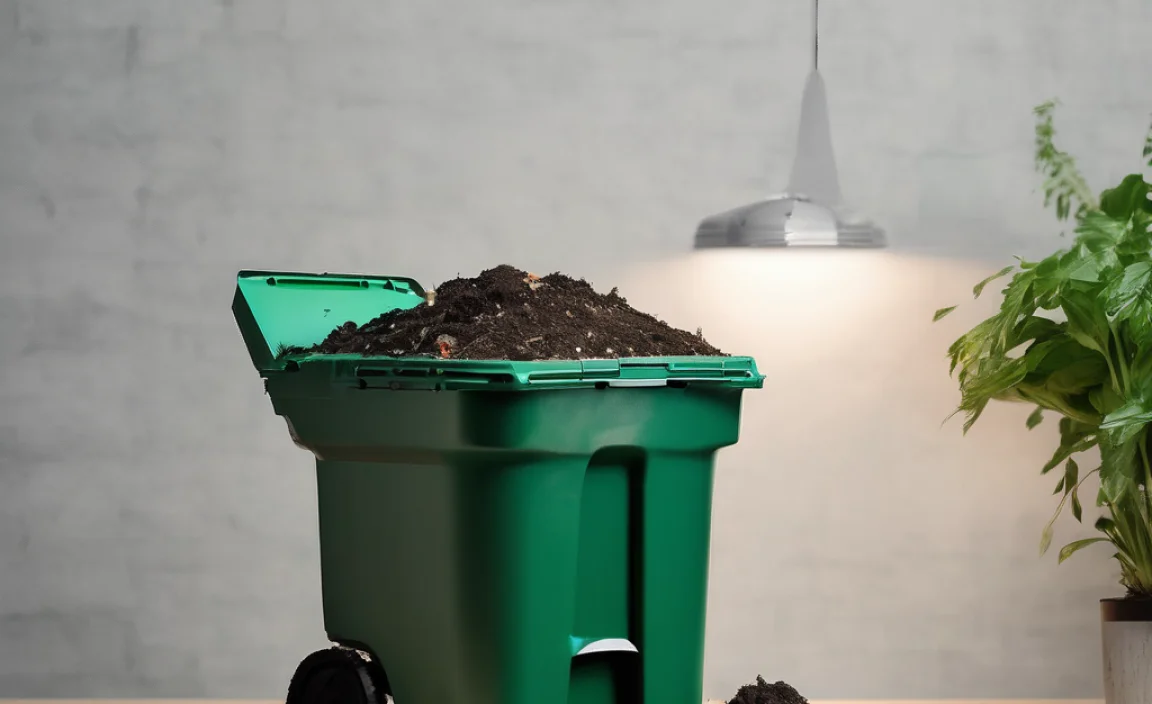
Living in a city apartment or a home with limited outdoor space often makes traditional composting seem impossible. Who wants a giant compost pile on their balcony or dealing with the smell and pests that can come with it? Bokashi composting is the answer for urbanites for several key reasons:
- Compact Size: Bokashi systems are small, typically consisting of two airtight buckets. They fit neatly under your kitchen sink or in a small pantry.
- No Odor: Because the process is anaerobic (no air), there’s no unpleasant rotting smell. You might notice a faint, sweet, fermenty smell, similar to pickles, which is a good sign!
- Fast Processing: The initial fermentation in the Bokashi bin takes about two weeks. After that, the pickled waste needs a short time to finish decomposing, but it’s much quicker than traditional methods.
- Handles All Food Scraps: Bokashi can handle meat, dairy, bones, oils, and even pet waste, meaning you can throw almost everything from your kitchen into the bin.
- Produces Valuable “Tea”: The fermentation process creates a liquid called “Bokashi tea” or leachate. This liquid is packed with nutrients and can be diluted to make an excellent plant fertilizer.
- Reduces Landfill Waste: By composting your food scraps, you’re diverting a significant amount of waste from landfills, reducing methane gas emissions.
The Basic Bokashi Setup: What You Need
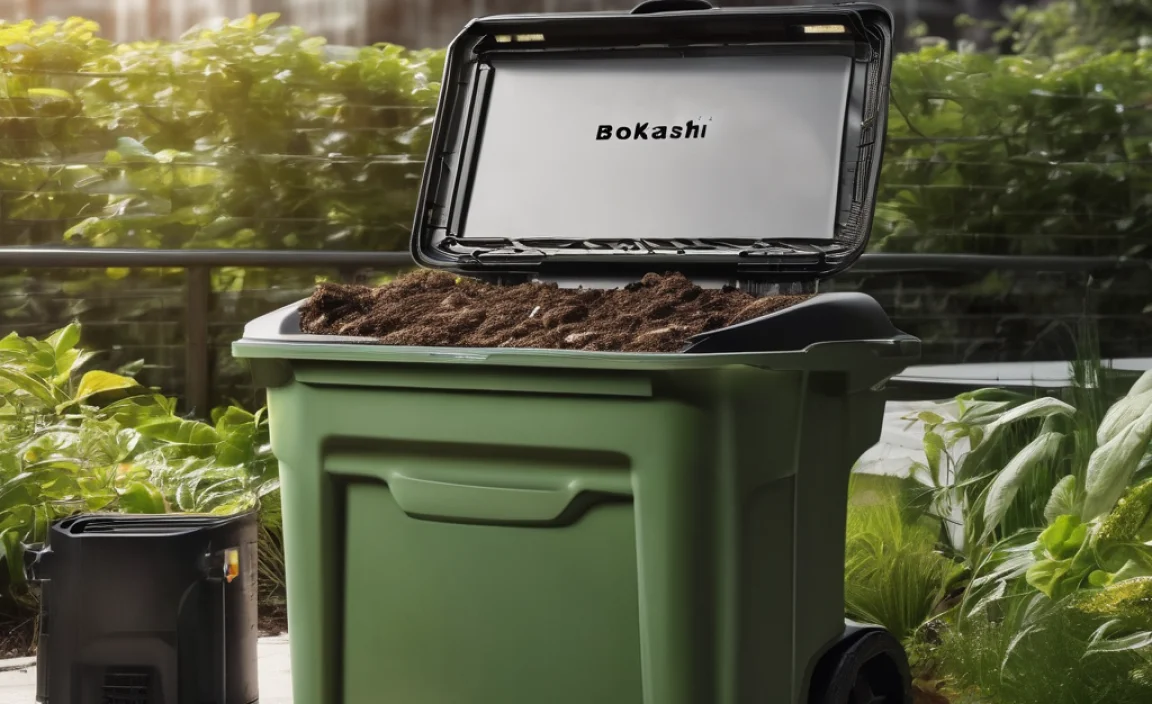
Getting started with Bokashi composting is surprisingly simple and doesn’t require a lot of fancy equipment. Here’s a breakdown of what you’ll need:
Bokashi Bin(s)
The core of the Bokashi system is an airtight container. Most Bokashi kits come with two stackable buckets. Each bucket typically has:
- An inner bucket or strainer with holes to keep the food scraps separate from the liquid.
- A tight-fitting lid to create an anaerobic environment.
- A tap or spigot at the bottom to drain off the nutrient-rich liquid (Bokashi tea).
You can buy dedicated Bokashi bins online or from garden supply stores. Some people even DIY their own by adapting airtight containers.
Bokashi Bran (EM-1 inoculated bran)
This is the magic ingredient! Bokashi bran is a carrier for the beneficial microbes (Effective Microorganisms or EM) that drive the fermentation process. You can buy pre-made Bokashi bran from many online retailers. It’s usually made from wheat or rice bran inoculated with EM-1, molasses, and water.
Everyday Food Scraps!
This is the best part – you can use almost all your kitchen waste. This includes:
- Fruit and vegetable peels
- Coffee grounds and tea bags
- Cooked food scraps (rice, pasta, bread)
- Meat, fish, and bones
- Dairy products (cheese, yogurt)
- Small amounts of oil and grease
- Eggshells
Avoid large amounts of liquid waste like soup, as this can dilute the microbes and make the system less effective. Also, while Bokashi can handle it, very large bones might take longer to break down.
How to Bokashi Compost: Step-by-Step
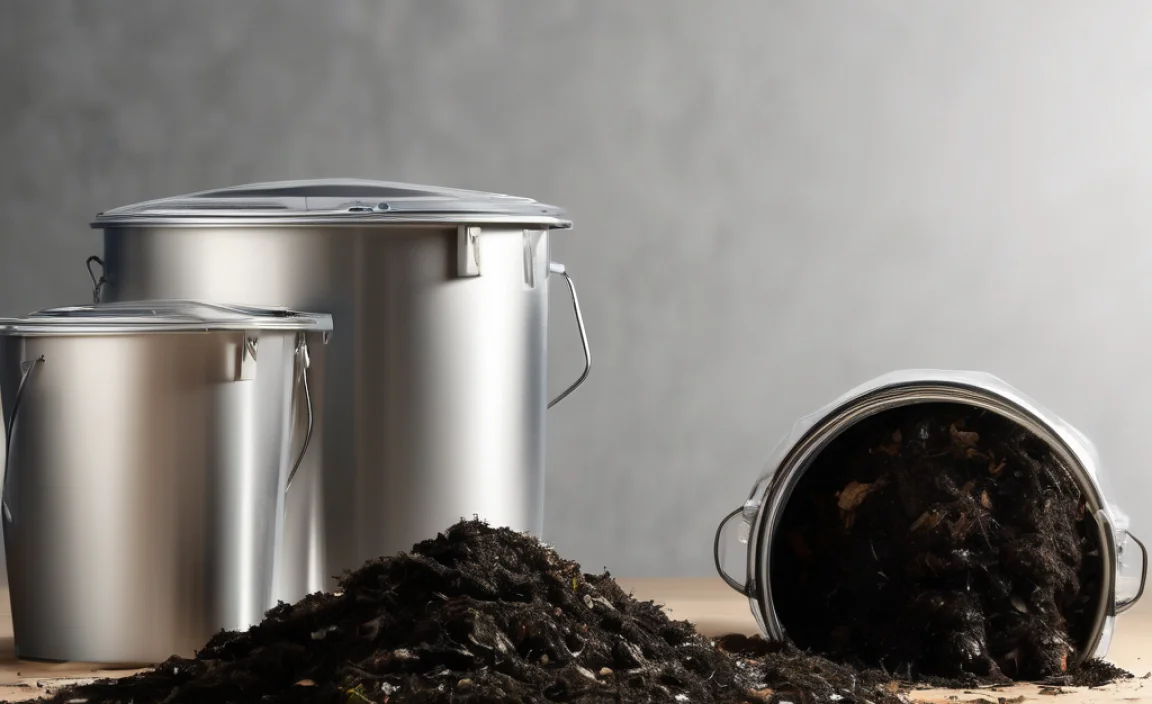
Now that you know what you need, let’s get composting! It’s a repeatable cycle that’s super easy once you get the hang of it.
Step 1: Start Adding Food Scraps
Begin by placing your food scraps into the Bokashi bin. Chop larger items into smaller pieces (about 1-2 inches) to help them break down faster. This isn’t strictly necessary for the fermentation, but it speeds up the later stages.
Step 2: Sprinkle with Bokashi Bran
After adding each layer of food scraps (or at the end of the day if you add scraps gradually), sprinkle a tablespoon or two of Bokashi bran over the top. The general rule is about 1-2 tablespoons of bran per inch of food scraps. You want to ensure the microbes can reach all the waste.
Step 3: Press Down the Scraps
Once you’ve added your scraps and bran, press down on the material in the bin. This helps remove any trapped air and ensures good contact between the scraps and the bran. You can use a lid, a small plate, or your hands for this.
Step 4: Seal the Bin Tightly
Place the lid on the Bokashi bin securely. The key to Bokashi is keeping it airtight to create that anaerobic fermentation environment. This is what prevents bad smells and encourages the right kind of microbial action.
Step 5: Repeat Daily
Continue adding food scraps, sprinkling with bran, pressing down, and sealing the bin each day until the bin is about 75-80% full. Don’t pack it too tightly.
Step 6: Ferment!
Once the bin is full, seal it tightly and let it sit for at least two weeks. During this time, the microbes will work their magic, pickling the food waste. Keep the bin in a relatively warm place, ideally between 60-75°F (15-24°C), as this is the optimal temperature range for the microbes. Avoid direct sunlight.
Step 7: Drain the Bokashi Tea
During both the filling and fermenting stages, liquid will accumulate at the bottom. You’ll need to drain this liquid regularly (every 1-3 days) by opening the tap. This “Bokashi tea” is highly concentrated and should not be applied directly to plants undiluted. Refer to the section on “Using Your Bokashi Tea” for dilution ratios.
Step 8: Bury or Add to Compost Pile (The “Finishing” Stage)
After the two-week fermentation period, you’ll have pickled food waste. This is not yet “finished” compost. The pickled material needs to be further decomposed. Here are the common ways to do this:
- Bury it: Dig a hole in your garden soil (at least 6-8 inches deep) and bury the fermented scraps. Cover it with soil and allow about 2 weeks for it to break down completely before planting in that spot.
- Add to a Traditional Compost Pile: Mix the fermented scraps into an existing hot compost pile. The Bokashi material will rapidly break down due to the established microbes in the compost pile.
- Use a Worm Bin: Worms love Bokashi-fermented material. Add it to your worm bin, and they will happily consume it.
- Use a Bokashi “Finishing” Bin: For those without garden access, specialized Bokashi finishing bins are available. These are aerated bins where the fermented waste can break down over a few weeks.
You’ll know the material is finished when it no longer resembles the original food scraps and has a dark, crumbly texture and an earthy smell.
Tips for Success in Bokashi Composting
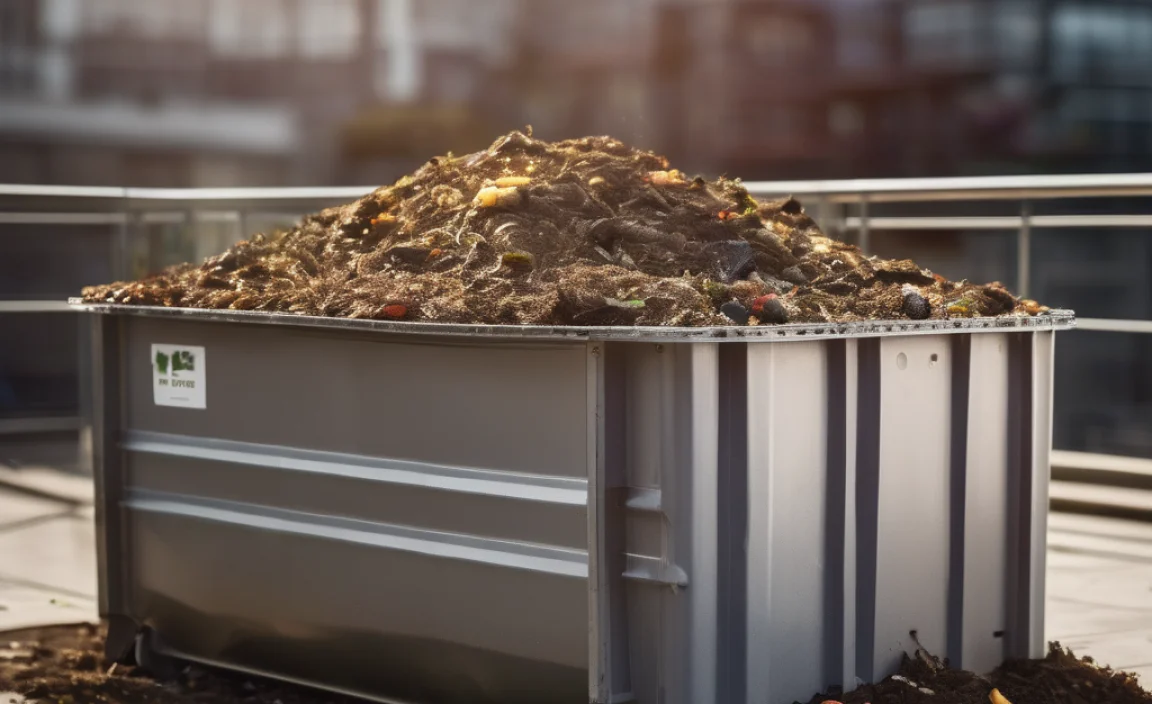
While Bokashi is pretty straightforward, a few pointers can make your experience even smoother:
- Chop It Up: Smaller pieces of food waste break down faster in the finishing stage.
- Maintain the Seal: Ensure your lid is always tight. A good seal is crucial for anaerobic conditions.
- Don’t Overfill: Leave a little space in the bin (around 20%) to allow for proper fermentation.
- Temperature Matters: While it will work in cooler temperatures, fermentation is fastest and most effective in the recommended warmth range.
- Bran Distribution: Make sure the Bokashi bran is evenly distributed over the food scraps to ensure all waste is inoculated.
- Drain Regularly: Don’t forget to drain the Bokashi tea. If too much liquid builds up, it can hinder the fermentation process and create a sour smell.
Using Your Bokashi Tea (Liquid Fertilizer)
That liquid you drain from the bottom of your Bokashi bin? It’s also known as “Bokashi tea” or leachate and is a potent source of nutrients for your plants. However, it’s very concentrated, so it’s essential to dilute it before use.
Dilution Ratio: Mix Bokashi tea with water at a ratio of 1:100 for regular feeding of most plants. For more robust feeding, or for established plants, you can use a 1:50 ratio. A 1:100 ratio means 1 part Bokashi tea to 100 parts water.
How to Use:
- Water your houseplants.
- Use it on your balcony garden or flower beds.
- Pour it into your traditional compost bin (it can help speed up decomposition).
If your Bokashi tea has a strong, foul odor, it might indicate that the fermentation didn’t go as planned (often due to a poor seal or too much liquid). In this case, it’s best to dilute it even further or avoid using it on plants.
What Can and Can’t Go in Your Bokashi Bin?
The beauty of Bokashi is its versatility compared to traditional composting. Here’s a quick rundown:
What Definitely CAN Go In:
- All fruit and vegetable scraps
- Meat, fish, and bones
- Dairy products (milk, cheese, yogurt)
- Cooked food scraps (rice, pasta, bread)
- Coffee grounds and tea bags
- Eggshells
- Lawn clippings and garden waste (in moderation, as they can add moisture)
- Cardboard and paper (shredded, in moderation)
- Pet waste (dog and cat feces are fine, but avoid soiled cat litter)
What to Use Sparingly or Avoid:
- Excessive Liquids: Very watery foods like soups. If you add them, try to balance with drier material and extra bran.
- Large Woody Materials: Such as thick branches or large stumps. These will take a very long time to break down even in the finishing stages.
- Diseased Plants: While Bokashi fermentation kills many pathogens, it’s best to err on the side of caution with severely diseased plants, especially if you’re burying the material directly in your garden.
- Non-Organic Materials: Plastics, metals, glass, etc.
Here’s a handy table summarizing the common items:
| Can Bokashi Handle It? | Yes! | Use Sparingly / With Caution | No! |
|---|---|---|---|
| Category | |||
| Fruits & Veggies | ✔ | ||
| Meat, Fish, Bones | ✔ | ||
| Dairy | ✔ | ||
| Cooked Foods | ✔ | ||
| Coffee Grounds & Tea Bags | ✔ | ||
| Eggshells | ✔ | ||
| Oils & Grease | ✔ | ||
| Pet Waste (Feces) | ✔ | ||
| Soups / Excess Liquids | ✔ | ||
| Large Woody Items | ✔ | ||
| Diseased Plants | ✔ | ||
| Plastic, Metal, Glass | ✔ |
Troubleshooting Common Bokashi Issues
Even with a simple system, you might run into a snag now and then. Here’s how to fix common Bokashi composting problems:
| Problem | Likely Cause | Solution |
|---|---|---|
| Bad Odor (Rotten Smell) | Lid not sealed properly, too much liquid, not enough Bokashi bran. | Ensure the lid is airtight. Drain the liquid more frequently. Add more Bokashi bran and press down firmly. If it’s really bad, you might need to start the batch over or add it to a vigorous compost pile. The smell should be sweet and fermented, not rotten. |
| Mold Growth (White fuzz) | This is actually usually a good sign! It indicates the microbes are working. | Continue as normal. If you see black or green mold, it might be an issue with air exposure or the wrong type of microbes. |
| No Liquid (Bokashi Tea) Being Produced | Too dry, lid not sealing well, or it’s just too cold. | Add a small amount of water if it seems dry. Check the lid seal. If the temperature is consistently low, the microbes are less active. Ensure the bran is mixed well with the scraps. |
| Food Not Breaking Down After Two Weeks | Insufficient bran, poor temperature, or lid seal not maintained. | Check that you used enough bran and that you pressed down the scraps to remove air. Ensure the bin has been kept in a suitable temperature range. Verify the lid has been consistently sealed. |
| Pests (Fruit Flies) | Lid not sealing correctly, scraps exposed. | Press down scraps firmly after each addition. Ensure the lid is creating a good seal. You can also place a small plate or plastic wrap directly on top of the scraps before sealing the lid to create an extra barrier. |
Bokashi vs. Traditional Composting
It’s helpful to see how Bokashi stacks up against the composting methods you might be more familiar with.
| Feature | Bokashi Composting | Traditional Composting (Hot/Cold pile) |
|---|---|---|
| Process | Anaerobic fermentation (pickling) | Aerobic decomposition (decay with oxygen) |
| Speed | Fast initial fermentation (2-3 weeks), then quick finishing stage. | Slower; can take months to a year depending on method and maintenance. |
| What You Can Compost | Almost all kitchen scraps, including meat, dairy, bones, oils. | Primarily fruit/veg scraps, yard waste, paper/cardboard. Meat, dairy, oils typically avoided. |

I am passionate about home engineering. I specialize in designing, installing, and maintaining heating, ventilation, and air conditioning systems. My goal is to help people stay comfortable in their homes all year long.
